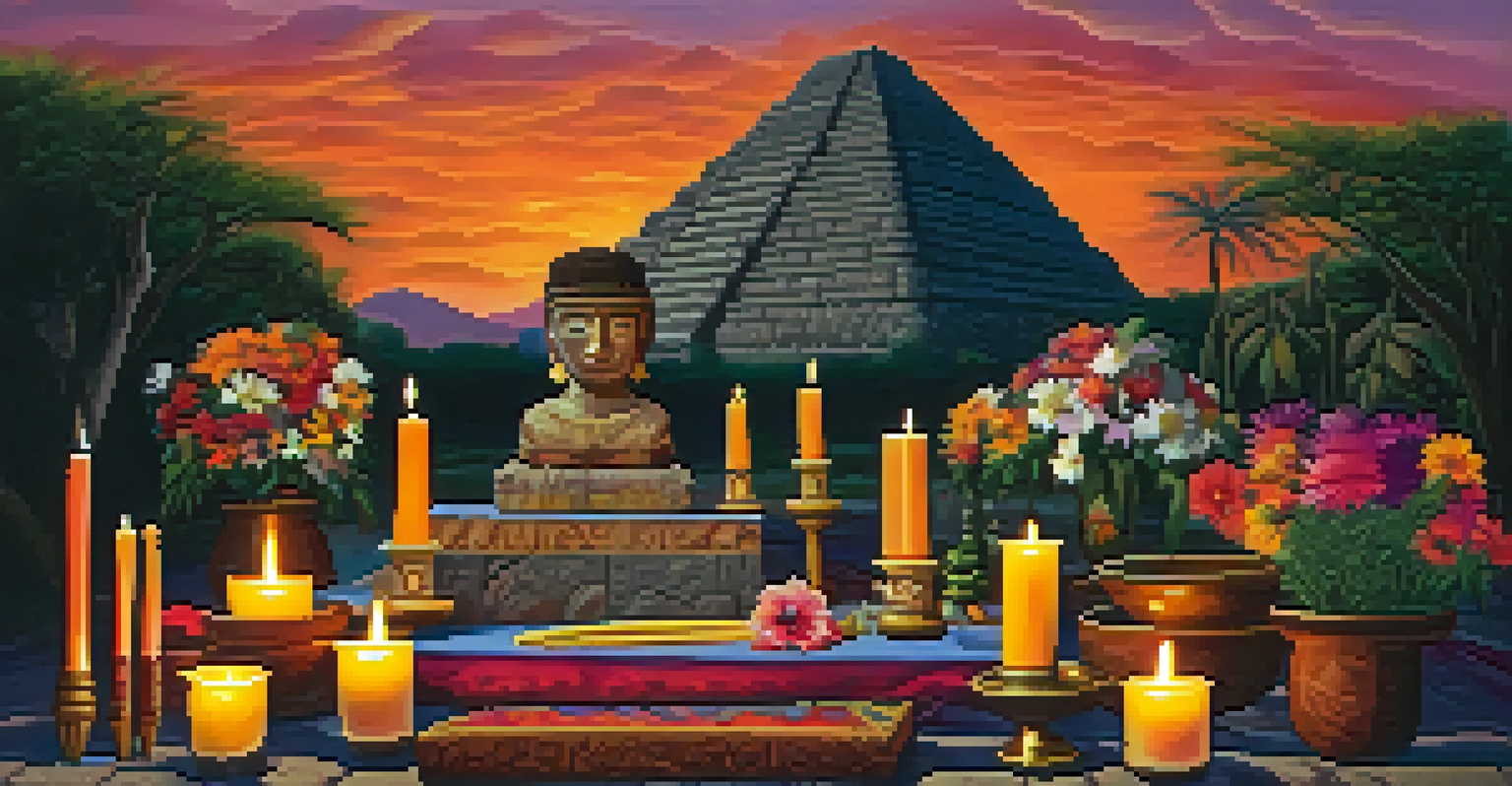Entheogens in Ancient Cultures: Dream Interpretation

Understanding Entheogens: A Brief Overview
Entheogens are substances that induce spiritual experiences, often used in various cultures for religious or healing purposes. These natural compounds can alter consciousness, providing deeper insights into the self and the universe. From ancient Mesopotamia to Mesoamerica, different cultures utilized these substances in rituals to connect with the divine.
Dreams are the royal road to the unconscious.
One common aspect of entheogen use is their role in dream interpretation. In many ancient societies, dreams were considered messages from the gods or the ancestors, offering guidance and prophecy. By using entheogens, individuals sought to enhance their understanding of these dreams, interpreting them through a spiritual lens.
The intertwining of entheogens and dreams highlights a profound relationship between altered states of consciousness and the subconscious mind. This connection invites us to explore how these substances shaped the spiritual and psychological frameworks of ancient cultures.
Dreams as Spiritual Messages in Ancient Traditions
Throughout history, dreams have been revered as vital sources of insight. Ancient Egyptians, for instance, believed that dreams could reveal one's fate and were often interpreted by priests. This reverence for dreams extended to many cultures, where they were seen as direct communication from deities or a reflection of the dreamer's soul.

In these ancient traditions, interpreting dreams was not merely an intellectual exercise but a spiritual one. Dreamers often sought guidance through rituals, including the use of entheogens, to tap into deeper layers of meaning. This practice allowed them to bridge the gap between the physical and spiritual realms, enabling a richer understanding of their dreams.
Entheogens Enhance Spiritual Insights
Entheogens have been used across cultures to induce spiritual experiences and deepen the understanding of dreams.
The significance placed on dreams within these cultures illustrates their belief in a connected universe, where every thought and dream had purpose. This belief system encouraged individuals to pay attention to their dreams and seek answers beyond the ordinary.
The Role of Shamans in Dream Interpretation
Shamans have played a pivotal role in various ancient cultures, acting as intermediaries between the spiritual and physical worlds. They were often responsible for interpreting dreams and visions, using their knowledge of entheogens to enhance their insight. The shamanic journey frequently involved the use of these substances to access altered states of consciousness, allowing them to navigate the dream world more effectively.
The use of entheogens allows us to glimpse the divine, to understand the mysteries of life and death.
In many indigenous cultures, shamans would enter trance-like states to connect with spirits, seeking guidance for individuals who came to them with dream-related concerns. This practice emphasized the importance of community and the shared experience of dreams, reinforcing the idea that dreams were not just personal but communal messages.
Through the lens of shamanism, dreams became a collective narrative, where individual experiences contributed to the larger tapestry of cultural understanding. The shaman's role as a dream interpreter highlights the significance of community in navigating the complexities of the subconscious.
Entheogens in Mesoamerican Cultures
In Mesoamerican cultures, entheogens like peyote and psilocybin mushrooms were integral to spiritual practices. These substances were often consumed during rituals to connect with the divine and gain insights into dreams. The Aztecs, for instance, used peyote in ceremonies to enhance their spiritual experiences, believing it opened the pathways to the spirit world.
Dreams in these cultures were often seen as prophetic, with shamans interpreting them to guide their communities. The combination of entheogen use and dream interpretation formed a unique approach to understanding one's place in the universe. This interconnectedness reinforced the belief that dreams could hold significant messages about the future.
Dreams as Communal Guidance
Ancient cultures viewed dreams as messages from the divine, often interpreted collectively through rituals and the guidance of shamans.
The legacy of these practices can still be observed today, as many modern spiritual seekers explore the teachings of ancient Mesoamerican cultures. By revisiting these traditional practices, individuals can gain insights into their own dreams and experiences.
The Significance of Dream Symbols in Ancient Cultures
Dream symbols often carried specific meanings in ancient cultures, serving as keys to understanding deeper truths. For instance, a serpent might symbolize transformation, while a river could represent the flow of life. These symbols were not random but deeply rooted in the cultural narratives and spiritual beliefs of the peoples who dreamed them.
Entheogens played a crucial role in unlocking these symbols' meanings. By altering consciousness, users could perceive their dreams differently and access layers of symbolism that might otherwise remain hidden. This process of exploration allowed individuals to decode their dreams, leading to personal revelations and a greater connection to their cultural heritage.
As dream interpretation became a communal practice, shared symbols contributed to collective wisdom. This communal approach fostered a richer understanding of dreams, where individual experiences were woven into the fabric of cultural identity.
Modern Perspectives on Ancient Dream Practices
Today, interest in ancient dream practices has resurfaced, particularly as people seek alternative spiritual experiences. Modern practitioners often look to the rituals of ancient cultures for inspiration, aiming to integrate these practices into their lives. This revival includes exploring the use of entheogens for enhancing dream work and spiritual growth.
Contemporary interpretations of dreams draw heavily on the insights from ancient cultures, emphasizing the importance of understanding personal symbols and narratives. As people reconnect with these traditions, they find value in the wisdom that has been passed down through generations.
Reviving Ancient Dream Practices
Modern spiritual seekers are revisiting ancient dream interpretation practices, integrating entheogens to enrich their personal growth and self-awareness.
This modern resurgence reflects a collective yearning for deeper connections to self and spirit. By embracing the teachings of ancient cultures, individuals can enrich their dream practices, ultimately leading to greater self-awareness and personal transformation.
Conclusion: The Timeless Connection Between Dreams and Spirit
The exploration of entheogens and dream interpretation in ancient cultures reveals a timeless connection between the human experience and the spiritual realm. These practices served as powerful tools for understanding oneself and the world, emphasizing the significance of dreams in guiding individuals on their journeys. As we look back at these ancient traditions, we can appreciate the depth and complexity of their beliefs.
In our modern world, there is a growing recognition of the importance of dreams and spiritual exploration. By revisiting the wisdom of ancient cultures, we can find new ways to interpret our dreams and connect with our inner selves. This journey invites us to explore the mysteries of consciousness and the profound insights that lie within.

Ultimately, the legacy of entheogens and dream interpretation continues to inspire seekers today. By honoring these ancient practices, we can cultivate a deeper understanding of ourselves and our place in the universe, fostering a more profound connection to the dreams we hold dear.